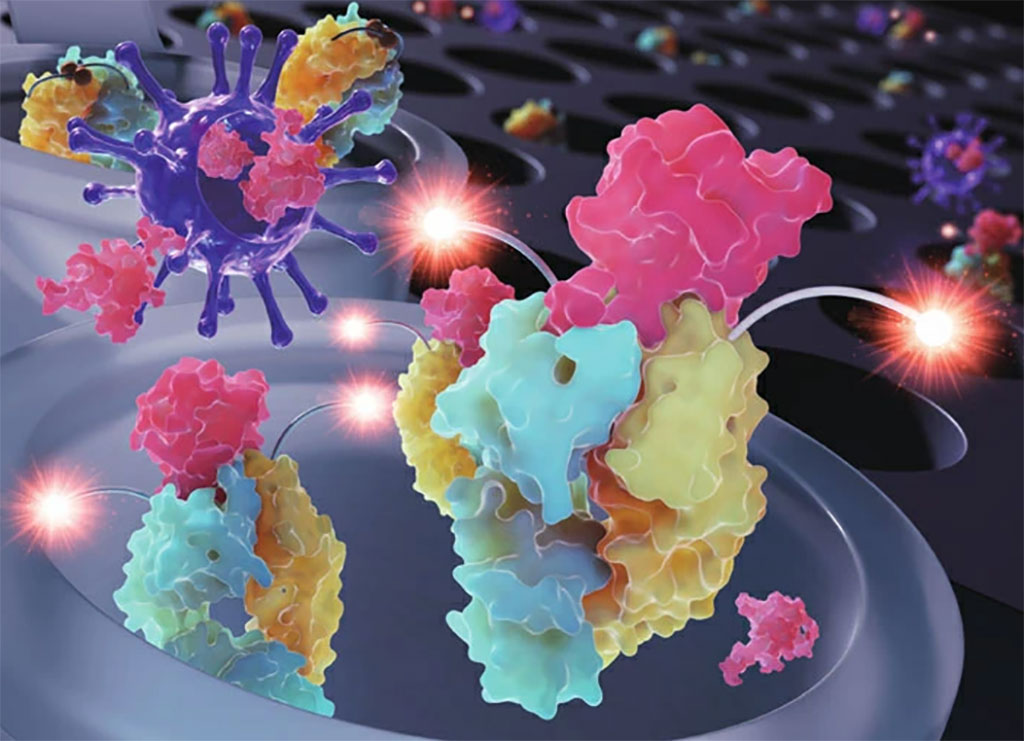New DNA Sensor Detects Presence of Virus and Also Whether it’s Infectious
Posted on 23 Sep 2021
A new sensor can detect not only whether a virus is present, but whether it’s infectious - an important distinction for containing viral spread.
Researchers at the University of Illinois Urbana-Champaign (Champaign, IL, USA) and collaborators developed the sensor, which integrates specially designed DNA fragments and nanopore sensing, to target and detect infectious viruses in minutes without the need to pre-treat samples. They demonstrated the sensor’s power with two key viruses that cause infections worldwide: the human adenovirus and the virus that causes COVID-19.

The “gold standard” of viral detection, PCR tests detect viral genetic material but cannot distinguish whether a sample is infectious or determine whether a person is contagious. This can make it more difficult to track and contain viral outbreaks, according to the researchers. Tests that detect infectious viruses, called plaque assays, exist but require special preparation and days of incubation to render results. The new sensing method can yield results in 30 minutes to two hours, the researchers report, and since it requires no pre-treatment of the sample, it can be used on viruses that will not grow in the lab.
Being able to distinguish infectious from non-infectious viruses and to detect small amounts from untreated samples that may contain other contaminants is important not only for rapid diagnosis of patients who are in the early stage of infection or who are still contagious after treatment, but for environmental monitoring as well, according to the researchers. The sensing technique could be applied to other viruses, the researchers say, by tweaking the DNA to target different pathogens. The DNA aptamers used in the sensor can be readily produced with widely available DNA synthesizers, similarly to the RNA probes produced for PCR tests. Nanopore sensors are also commercially available, making the sensing technique readily scalable.
The researchers are working to further improve the sensors’ sensitivity and selectivity, and are integrating their DNA aptamers with other detection methods, such as color-changing dipsticks or sensors to work with smartphones, to eliminate the need for special equipment. With the ability to distinguish noninfectious from infectious viruses, the researchers said they hope their technology could also aid in understanding mechanisms of infection.
“With the virus that causes COVID-19, it has been shown that the level of viral RNA has minimal correlation with the virus’s infectivity. In the early stage when a person is infected, the viral RNA is low and difficult to detect, but the person is highly contagious,” said Yi Lu, a professor emeritus of chemistry. “When a person is recovered and not infectious, the viral RNA level can be very high. Antigen tests follow a similar pattern, though even later than viral RNA. Therefore, viral RNA and antigen tests are both poor in informing whether a virus is infectious or not. It may result in delayed treatment or quarantine, or premature release of those who may still be contagious.”
“The aptamer technology could be further developed into multichannel platforms for detecting other emerging waterborne viral pathogens of public and environmental health concern, such as norovirus and enteroviruses, or for variants of the virus that causes COVID-19,” said Benito Marinas, a professor of civil and environmental engineering.
Related Links:
University of Illinois at Urbana-Champaign









 Analyzer.jpg)



